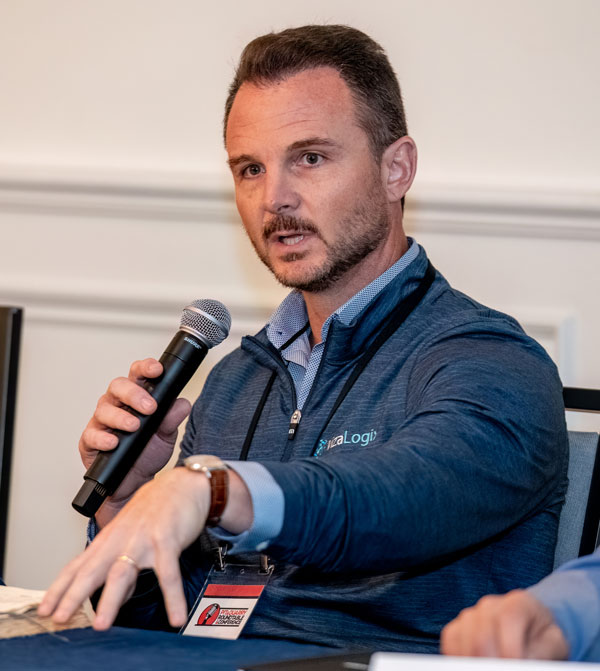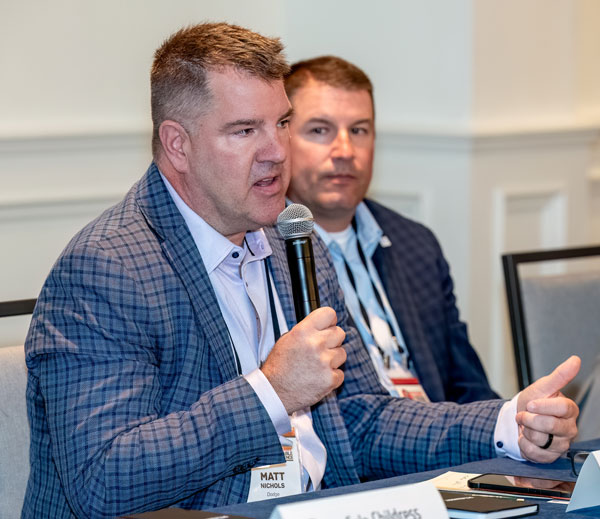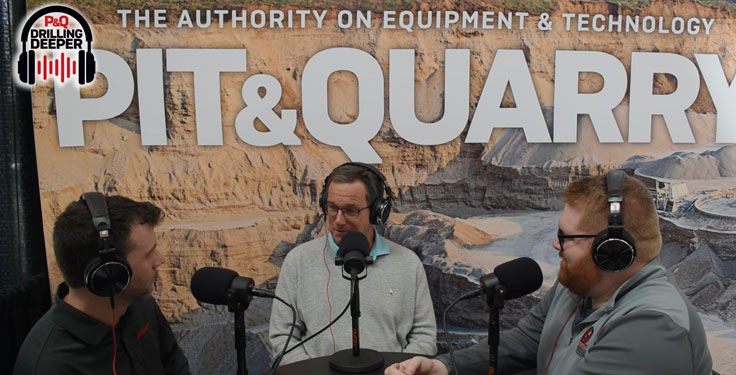The following transcript was edited for brevity and clarity from one of two concurrent Feb. 2 discussions at the 2024 Pit & Quarry Roundtable & Conference. Part 1 of this conversation can be found here.

PIT & QUARRY: For the producers, what transformational equipment and technology have you invested in or explored? For the suppliers, how are you incorporating tech into your equipment offerings?
WILLIAM WETTA (DSC DREDGE): We’re a dredge manufacturer. Most of our equipment takes about 18 months to make – start to finish. Most of it is custom. We’ve been spooling data off of our equipment and some competitive equipment for the last five years. So, we’ve got five years of data off of about 100 machines.
Our 2025 goal as a company for pit mining is to have fully autonomous dredging – not remote-control dredging – where you load a mine plan up in the machine. We’ve got a full staff of electrical engineers, automation engineers and others who are strictly working on that.
The data we’re analyzing shows how poorly the equipment is being operated via man. It’s about the simplest automation you can do.
BRENT MCMANIS (WEG ELECTRIC CORP.): One of the things we like to look at is the cost of sensors that we can put on an electric motor, gearbox or bearing. As technology is improving, the ability to get that back to the cloud through Bluetooth 5 really allows us to put more data in from motors and rotating equipment.
In developing that software, the AI machine learning that looks at that motor and gearbox says: ‘There’s something going on there. Go out and take a look at it.’ So, there’s that aspect of it, and I always like to think there’s a safety aspect, too.
There’s a tremendous amount of data out there – not only from the machine, but from your automation equipment. All of that can be brought into the AI platforms to help you better predict failures and show what’s going on in your process.
DAMIAN MURPHY (PECKHAM INDUSTRIES): We’re catching up to the bigger boys in the equipment management to bring technology to managing a fleet. With that tech, we’re getting our biggest bang for our buck now. It’s attacking the labor issue, and it’s better, more consistent and presents fewer problems. The computers in there are really impressive.
MICAH TYSVER (CRUSH MODE): One of the biggest topics right now is AI. What we’ve been utilizing – and some of our customers use – is this: For any of our units, we can download all operations manuals and parts manuals into a database. If the customer calls and gives us a vague description of the unit they’re look for, you can type a few keywords into an AI database, and it will pull up exactly what part number you need. And it’s super quick.
SHAWN BONNINGTON (VIZALOGIX): I think there is a disparity between understanding what AI is available today versus the expectation that we see from this industry. AI, by and large, is kind of just a large language model. It’s great for sales, for marketing, for the descriptions of associating imagery. But everybody wants decision intelligence.
I think that’s kind of the next landscape of understanding in the industry. There’s a difference between artificial intelligence and decision intelligence. How do you help operate and manage a remote quarry with datasets?

PIT & QUARRY: For the producers here, what’s inhibiting your ability to incorporate new things into the business?
SCOTT ALEXANDER (SUMMIT MATERIALS): I think we’ve got a lot of potential going forward at Summit because we really haven’t put into place a lot of new technology to improve operations. We’re right in the throes of that right now.
We’ve done things like put in a CRM software to manage our sales process or work on our maintenance programs to be more predictive. But there’s more available in the industry, and we haven’t embraced that fully.
Internally, we created a center of excellence that continues to improve every department. It’s working across all regions. I know there’s a lot more opportunity than what we’ve ventured into as an industry. I’m optimistic once we engage that further, it’s going to help with our costs.
TRAVIS WELLMAN (CEMEX): One challenge we’re experiencing and in the crawling stages of is on the data side. You’ve got multiple streams of data depending on the manufacturer, depending on the equipment you have, depending on what you’re monitoring and your maintenance systems.
That’s the challenge for us. If you’re not developing something in house, how do you give third parties access to your complete information so your tools can work like they’re supposed to, and you still want to maintain security, too.
MATT NICHOLS (DODGE): I think the sensor technology has gotten really good and affordable. In the future, I think we’ll be able to determine that if a piece of equipment runs at a set temperature or vibration that it’s going to last a set number of weeks. I think the technology will eventually get there.
As we learn, we’ll be able to predict potentially when it’s going to fail. A lot of that’s advancing today, but when we get to that next stage, it will be really beneficial.












